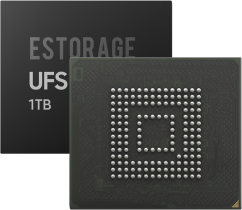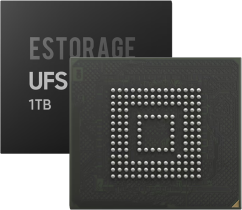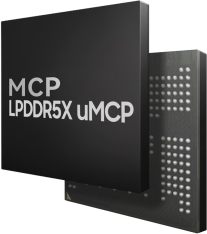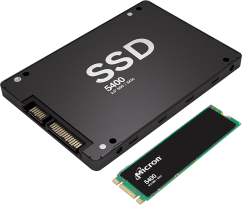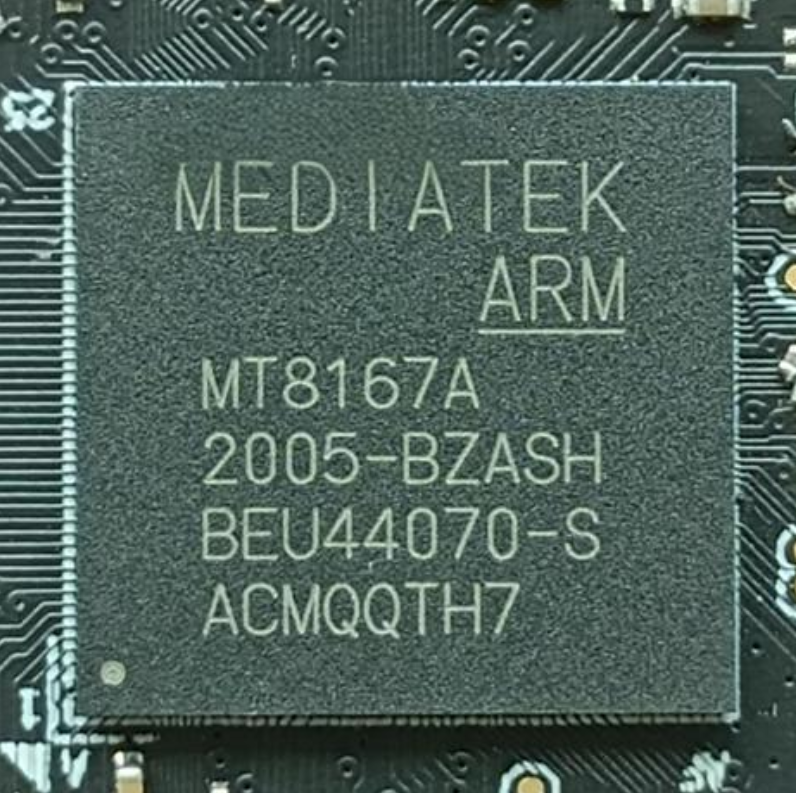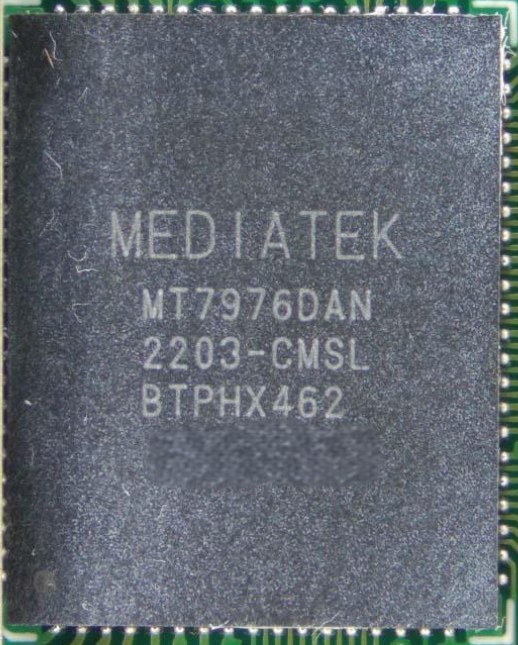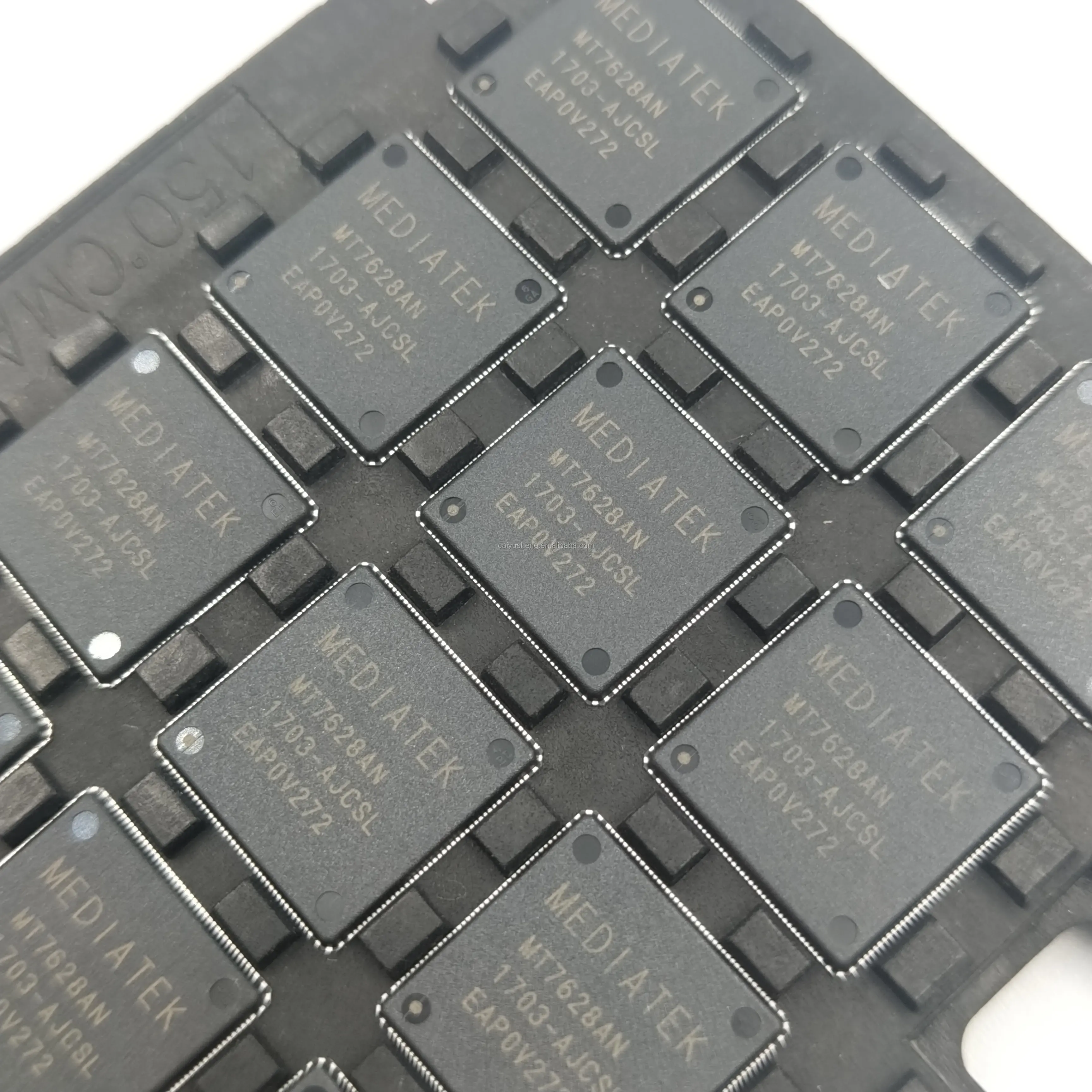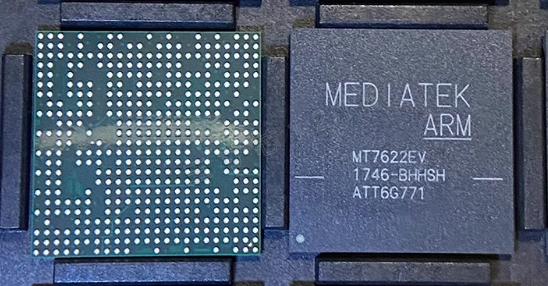Product Description
The MT9800UWRTFZ is a highly integrated SoC that brings together several advanced technologies to provide an efficient, powerful solution for various multimedia-centric and networking devices. Its primary strengths lie in its ability to handle demanding tasks like video playback, real-time gaming, and high-speed wireless communication, while maintaining low power consumption.
Performance and Processing
The use of ARM Cortex-A55 cores means the MT9800UWRTFZ is capable of handling a wide range of tasks efficiently. These cores are designed to offer a balance between high performance and energy efficiency, making them suitable for applications that require sustained processing power, such as media streaming, gaming, or complex multitasking. The chip’s multi-core configuration enhances its ability to execute parallel tasks, resulting in smoother performance when running multiple applications.
Graphics and Multimedia Capabilities
In terms of multimedia, the chip is designed to support a high-definition user experience. The Mali-G57 GPU provides solid graphics performance for tasks such as gaming, UI rendering, and video playback. The GPU is also capable of rendering high-resolution 3D content, making it suitable for both entertainment and productivity applications. Hardware video decoding and encoding for codecs like HEVC, H.264, VP9, and AV1 means that users can experience ultra-high-definition video streaming, even at 4K, without experiencing buffering or lag.
Connectivity and Network Integration
Connectivity is a critical feature for modern SoCs, and the MT9800UWRTFZ shines with its Wi-Fi 6 and Bluetooth 5.2 capabilities. Wi-Fi 6, being the latest Wi-Fi standard, offers increased throughput and improved network efficiency, especially in congested environments where multiple devices are connected. It ensures that devices running on this chip can handle higher data rates and have more stable connections, whether for video calls, online gaming, or media streaming. The inclusion of Bluetooth 5.2 allows for enhanced wireless audio experiences, including low-latency audio for applications like gaming and virtual reality (VR).
Memory and Storage
The support for LPDDR4X memory makes the MT9800UWRTFZ suitable for handling demanding tasks such as high-speed data processing, multitasking, and complex data handling. The increased memory bandwidth ensures that the SoC can keep up with modern applications and provide smooth performance even under heavy load. Additionally, with support for fast storage solutions like UFS and eMMC, devices utilizing the MT9800UWRTFZ can quickly load applications, store large files, and handle multimedia content with ease.
Energy Efficiency
Despite its powerful performance, the MT9800UWRTFZ is optimized for energy efficiency. This is essential for portable or battery-powered devices, such as smartphones, tablets, or IoT devices, where battery life is a key concern. The integration of a power management unit (PMU) allows the chip to intelligently adjust power usage based on the workload, ensuring that the device remains responsive while conserving power during periods of low demand. The power-saving modes reduce heat generation, making it suitable for compact, thermally-constrained devices.
Applications
This SoC can be deployed across a variety of consumer electronics and IoT devices, such as smartphones, tablets, set-top boxes, smart TVs, home routers, and industrial applications requiring multimedia processing and connectivity. It provides a seamless user experience by balancing performance, power consumption, and connectivity.
Conclusion
The MediaTek MT9800UWRTFZ is a highly capable system-on-chip that stands out in the multimedia, connectivity, and power efficiency domains. Its ability to deliver strong performance in a variety of tasks, from graphics rendering to video decoding and wireless communications, makes it a versatile choice for modern electronic devices. Whether for high-definition content consumption, gaming, or networking, the MT9800UWRTFZ provides a solid foundation for next-generation smart devices.
Specification
Architecture: The MT9800UWRTFZ uses a multi-core ARM Cortex-A55 processor, optimized for power efficiency and balanced performance. The SoC likely features multiple cores, enhancing multitasking and parallel processing capabilities, which is vital for modern computing and multimedia tasks.
Graphics and Multimedia:
The GPU is typically based on the Mali-G57 architecture or a similar variant, offering support for high-quality graphics rendering and acceleration. It can handle demanding applications, including gaming and video playback, at high resolutions (up to 4K).
Hardware Video Decoding: It supports various video codecs, including H.265 (HEVC), H.264, VP9, and AV1, enabling efficient video streaming and playback at high resolutions without overloading the CPU.
Connectivity:
Wi-Fi 6 (802.11ax): This provides improved bandwidth, lower latency, and enhanced efficiency, which makes it well-suited for dense environments, such as smart homes or office networks.
Bluetooth 5.2: Bluetooth 5.2 enhances the range and data transfer speed for wireless audio devices, such as headphones and speakers, and offers features like LE Audio for better audio quality.
Memory Support: The MT9800UWRTFZ supports LPDDR4X memory, which provides faster data transfer rates and power efficiency compared to older memory standards. It also supports high-bandwidth data channels, which is crucial for tasks like video processing, large file handling, and gaming.
I/O and Storage: The SoC is equipped with advanced I/O interfaces, including USB 3.0, eMMC, and UFS support for fast data storage access, enabling quick application loading and file transfers. It also supports various sensors, cameras, and external peripherals.
Power Management: The chip includes an advanced power management unit (PMU) that ensures optimized energy usage. Features like dynamic voltage scaling and low-power states help minimize power consumption during idle or low-demand tasks.

